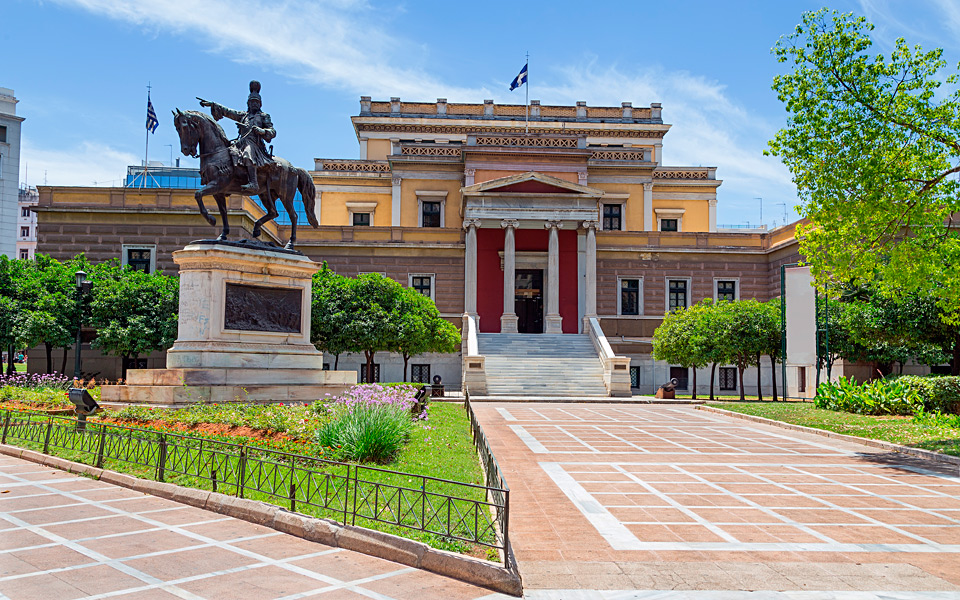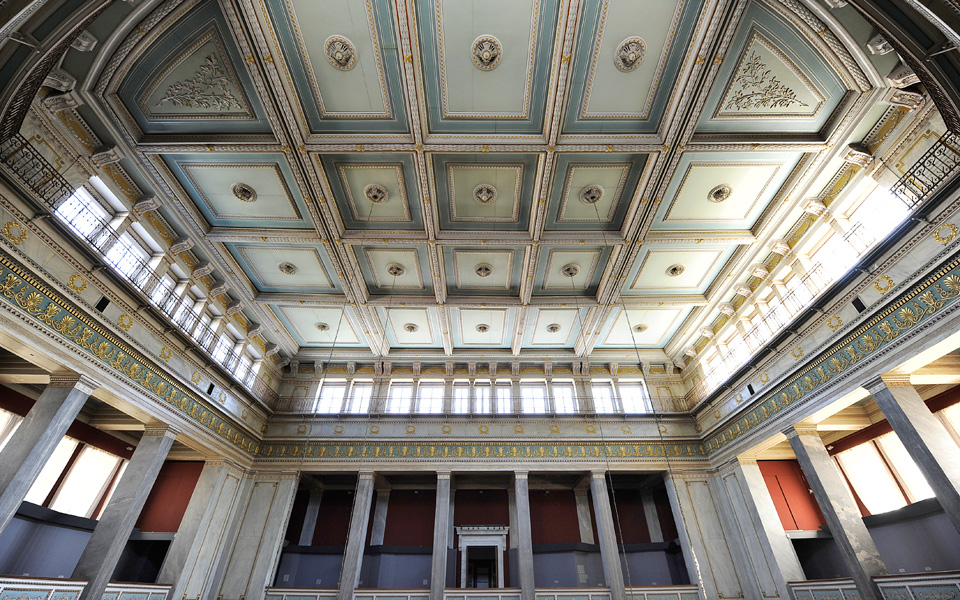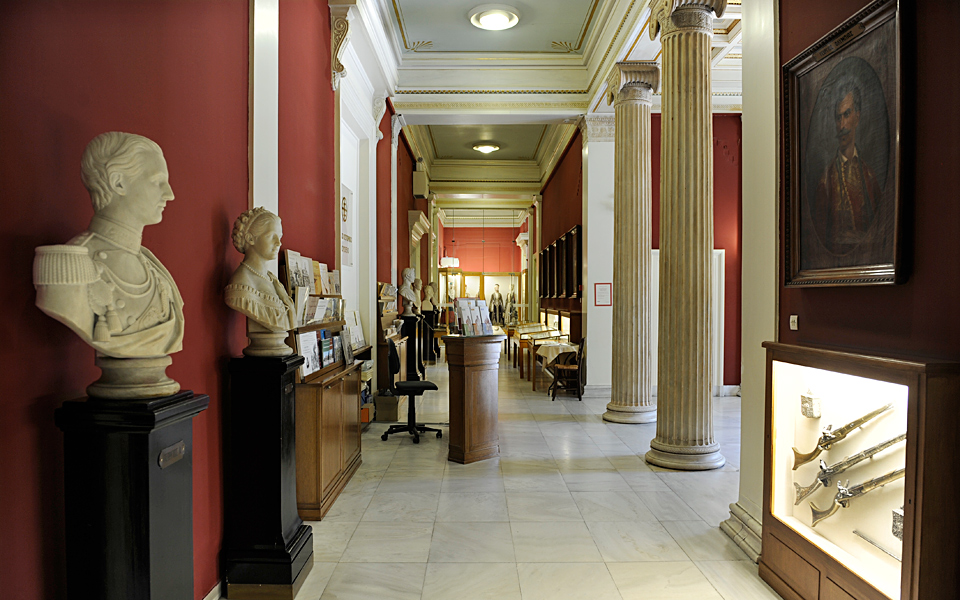Lake Vouliagmeni: The Hidden Gem of Athens
A natural spa by the Athenian...

The statue of General Theodoros Kolokotronis in the courtyard outside the National Historical Museum.
© Shutterstock
Can a bed fit in a trunk? It’s not a magic trick, but the folding camp bed used by Lord Byron, on display at the National Historical Museum of Athens.
Here you will also see the benches where Greek Parliament convened for 60 years and displays on the War of Independence: the imposing equestrian statue of one of its leaders, Theodoros Kolokotronis, dominates the courtyard entrance on 31 Stadiou Street.
The steps leading into museum are flanked by canons from that era. You will see General Theodoros Kolokotronis’ uniform, portraits of his brothers-in-arms, their weapons – true works of art – flags and banners, as well as other heirlooms from the struggle for liberation from Turkish rule.
The building was designed by Francois Boulanger and construction began in 1858 and ended in 1875, with modifications by Panagiotis Kalkos.
It served as the nation’s parliament until 1935 and became a museum in 1960 (and it served as the nation’s Parliament until 1935, becoming a museum in 1960).

The ceiling of the museum with its intricate paintings and motifs.
© Vangelis Zavos

The museum contains documents, artifacts and artwork that portray Greece's struggle for independence, including an original copy of the country's first constitution.
© Vangelis Zavos
You are welcome into the foyer by a series of rather stern busts, but at the far end of the corridor you are amply rewarded by a stunning oil painting by Lykourgos Kogevinas that is a reproduction of Eugene Delacroix’s famous “Massacre at Chios,” on display at the Louvre.
Hall 8 commemorates the foreigners that were inspired by the revolution, with paintings and sculptures by celebrated Philhellenes, among which is a piece by David d’Angers of a girl weeping over the tombstone of General Markos Botsaris.
Three more halls commemorate the friends of Greece with a display of memorabilia that includes playing cards with the faces of revolutionary heroes, dinnerware, embroidery and fans that promoted Philhellenism.
The history of the Greeks from the Fall of Constantinople to World War II is the subject of 19 halls and chambers.
Displays here include the throne of King George I, replicas of warship figureheads as well as a focus on the different fashions of traditional dress.
One of the most striking exhibits is an original manuscript of Greece’s first Constitution, penned in 1844.
National Historical Museum
• 13 Stadiou, Kolokotroni Square
• Opening Hours: Tue-Sun 8:30-14:30
• Admission is free on Sundays
A natural spa by the Athenian...
From bustling street markets to Hydra’s...
A forgotten world comes to life...
The workshop of famed tile painter...